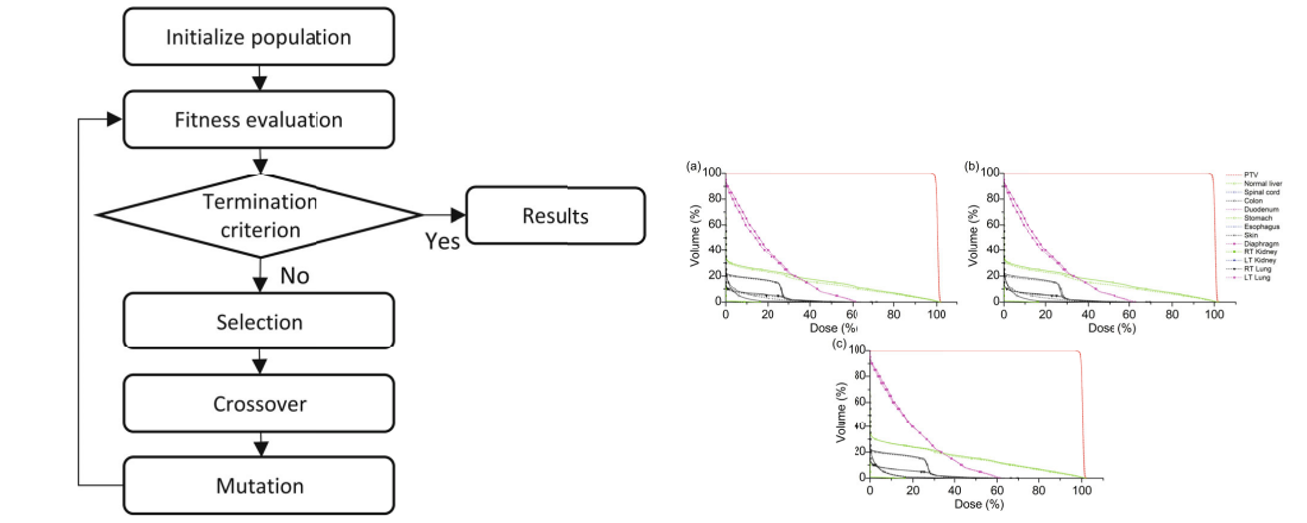 작성일 : 23-05-16 13:24
작성일 : 23-05-16 13:24
|
Feasibility Study of Beam Angle Optimization for Proton Treatment Planning Using a Genetic Algorithm
|
 |
|
글쓴이 :
관리자
 조회 : 412
|

This
study describes a method that uses a genetic algorithm to select optimal beam
angles in proton therapy and evaluates the effectiveness of the proposed
algorithm in actual patients. In the use of the genetic algorithm to select the
optimal angle, a gene represents the angle of each field and a chromosome
represents the combination of beam angles. The fitness of the genetic
algorithm, which represents the suitability of the chromosome to the solution,
was quantified by using the dose distribution. The weighting factors of the
organs used for fitness were obtained from clinical data through logistic
regression, reflecting the dose characteristics of actual patients. Genetic
operations, such as selection, crossover, mutation, and replacement, were used
to modify the population and were repeated until an evaluation based on fitness
reached the termination criterion. The proposed genetic algorithm was tested by
assessing its ability to select optimal beam angles in three patients with
liver cancer. The optimal results for fitness, planning target volume (PTV),
normal liver, and skin in the population were compared with the clinical
treatment plans, a process that took an average of 36.8 minutes. The
dose-volume histograms (DVHs) and the fitness of the genetic algorithm plans
did not differ significantly from the actual treatment plans. These findings
indicate that the proposed genetic algorithm can automatically generate proton
treatment plans with the same quality as actual clinical treatment plans.
Jaehyeon Seo, Yunhui Jo, Sunyoung Moon and
Myonggeun Yoon∗
Department of Bio-convergence Engineering,
Korea University, Seoul 02841, Korea
Sung Hwan Ahn, Boram Lee and Kwangzoo
Chung†
Department of Radiation Oncology, Samsung
Medical Center, Sungkyunkwan University School of Medicine, Seoul 06351, Korea
Seonghoon Jeong Department of Proton Therapy Center, National
Cancer Center, Goyang 10408, Korea
Journal
of the Korean Physical Society, Vol. 77, No. 4, August 2020, pp. 312∼316
|
|

 HOME > Research
HOME > Research

 HOME > Research
HOME > Research